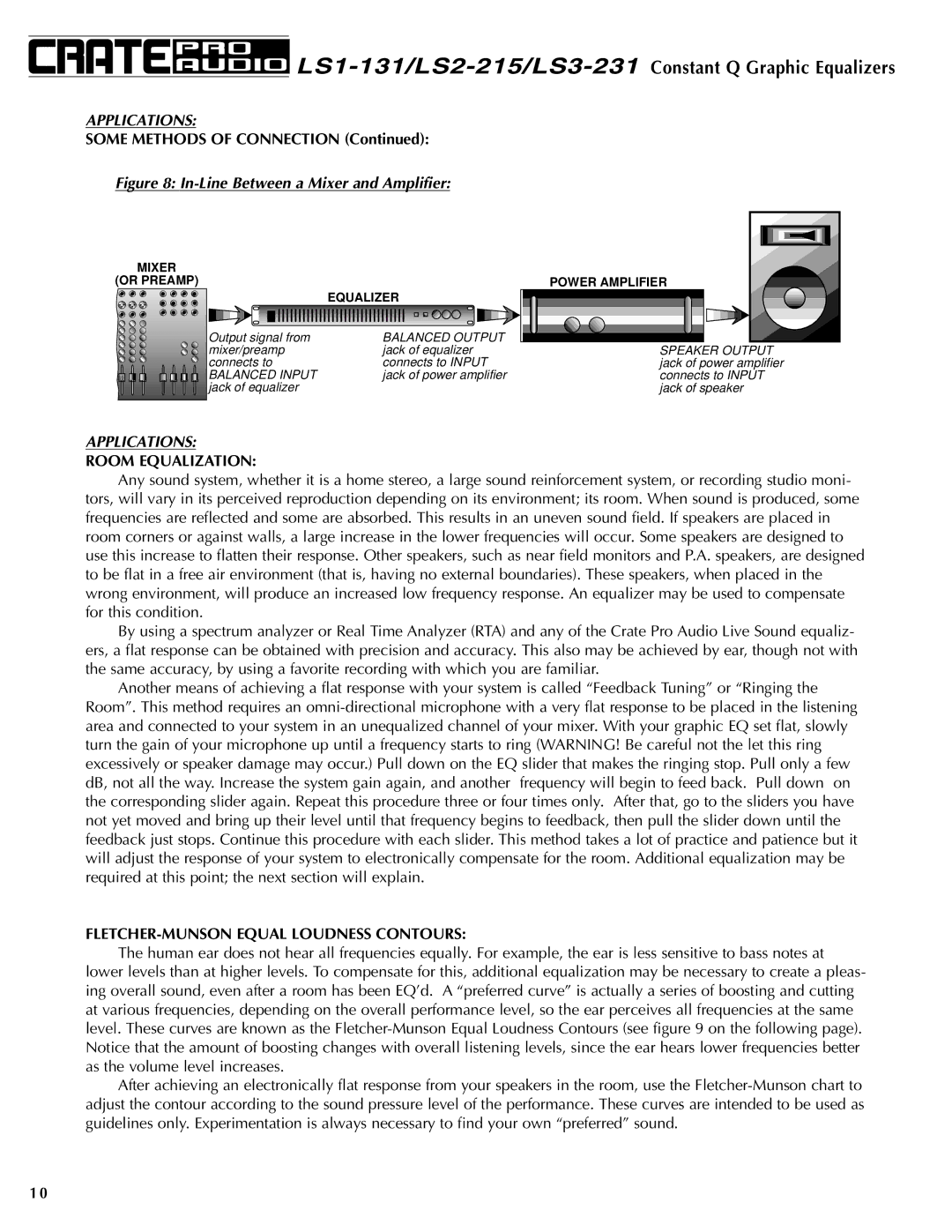LS2-215, LS1-131, LS3-231 specifications
Crate Amplifiers has long been a name synonymous with quality sound and innovative technology, and their latest offerings, the LS1-131, LS3-231, and LS2-215, showcase this legacy of excellence. These amplifiers are designed for musicians and sound engineers who demand performance and reliability.The LS1-131 is a compact yet powerful amplifier that delivers an impressive 100 watts of clean power. It features a versatile 3-channel design, allowing for a wide range of tonal options. The built-in digital effects processor includes reverb, delay, and chorus, enabling users to enhance their sound effortlessly. The LS1-131 is equipped with a 10-inch speaker, which provides a rich, full-bodied tone, making it ideal for both practice and live performances. Additionally, its lightweight design makes it easy to transport, catering to musicians on the go.
Moving up the line, the LS2-215 takes things a step further with a two-channel setup that boasts 200 watts of power. This amplifier is perfect for more demanding performance environments. The LS2-215 features a robust 15-inch speaker that offers deep bass response, making it suitable for genres that require low-end clarity. With its built-in EQ and multiple effects options, users can customize their sound further to suit their style. The durable construction ensures that this amp can withstand the rigors of touring, while the integrated handle allows for easy setup and transport.
At the top of the range, the LS3-231 offers an unrivaled combination of power and versatility with 300 watts of output. This amplifier features a sophisticated 4-channel design, providing musicians with an extensive array of sound-sculpting capabilities. The LS3-231 includes advanced connectivity options, including Bluetooth streaming, which allows for seamless integration with mobile devices for practice or performance. Its dual 12-inch speakers deliver incredible clarity and punch, making it a popular choice for professionals in larger venues.
All three models incorporate Crate's proprietary technology, such as thermal overload protection and robust signal processing, ensuring reliability in demanding situations. The user-friendly interface across the LS series makes it easy to adjust settings on the fly, allowing musicians to focus on their performance rather than their equipment. Whether you're a beginner or a seasoned pro, the Crate LS1-131, LS3-231, and LS2-215 amplifiers provide exceptional sound quality, flexibility, and durability to meet the needs of any performer.

